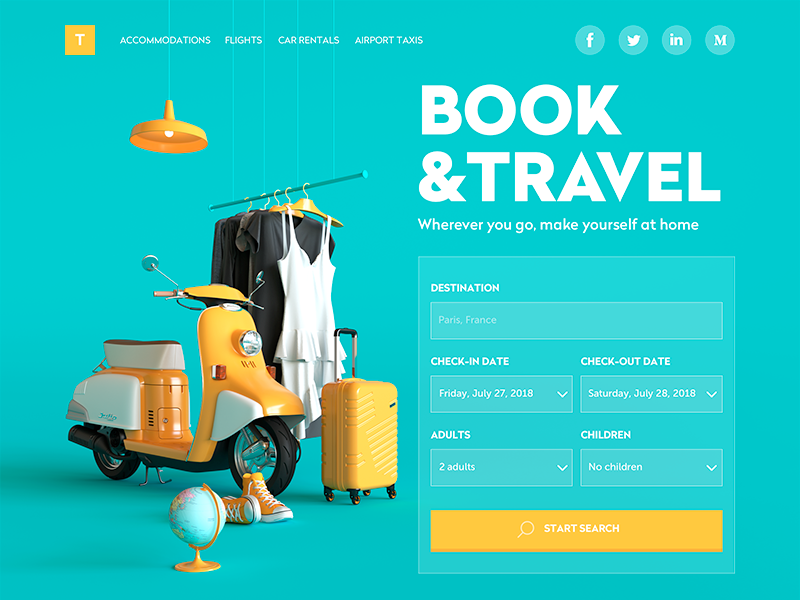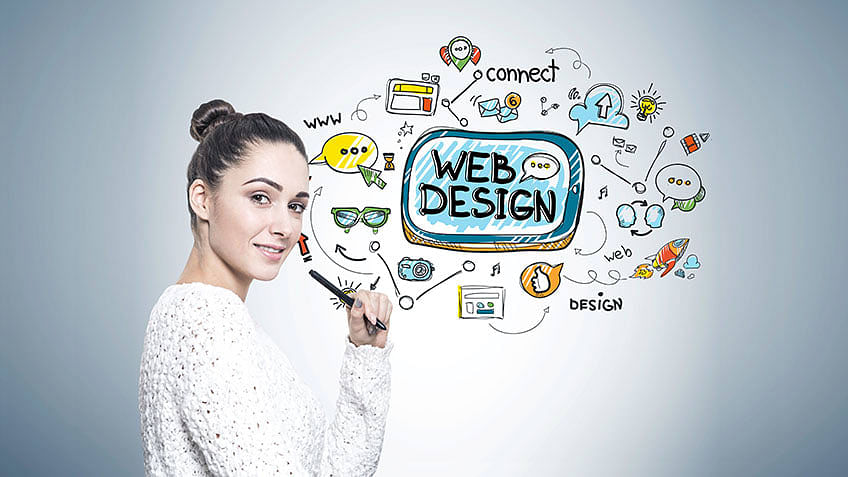The Best Sorts Of Website Design to Enhance Customer Experience and Interaction
In the ever-evolving landscape of digital communication, the effectiveness of website design substantially affects customer experience and engagement. Numerous design techniques, such as minimalist, receptive, and interactive layouts, each offer one-of-a-kind advantages that can deal with varied individual demands. Understanding which kinds of Web design ideal serve these purposes can be pivotal for services intending to enhance client satisfaction and retention. Nevertheless, the inquiry remains: which style aspects absolutely reverberate with customers and foster meaningful interaction? The exploration of these concepts exposes essential insights that may redefine your approach to website design.
Minimal Web Style
As digital landscapes become increasingly cluttered, minimalist Web layout has become a powerful method to improving user experience. This design viewpoint prioritizes simplicity, concentrating on crucial components while removing unneeded interruptions. By making use of enough white room, simple navigation, and a limited shade palette, minimalist design cultivates quality and guides user attention to key web content.
The core concept of minimalist website design is to produce a seamless communication for individuals. By decreasing cognitive load, customers can swiftly grasp details without feeling overwhelmed. This straight approach not just boosts functionality but additionally encourages involvement, as visitors are most likely to check out a website that is aesthetically appealing and simple to browse.
Furthermore, minimal design commonly stresses typography and imagery, using these elements purposefully to convey messages successfully. In significance, minimal Web layout is not just a pattern; it is a thoughtful technique that recognizes the significance of user-centered style.
Responsive Website Design
In today's varied electronic environment, responsive Web layout has become crucial for developing a smooth customer experience across a multitude of devices. As users access sites on mobile phones, tablets, desktops, and laptops, the capability of a web site to adapt its layout and content to different display dimensions and resolutions is critical.
Receptive website design utilizes versatile grids, images, and CSS media queries to make certain that Web material is offered efficiently, despite the device made use of. This strategy not only enhances the aesthetic allure of a web site however also substantially improves usability. Users are a lot more most likely to involve with a website that supplies a constant experience, as it gets rid of the disappointment of having to focus or scroll exceedingly.
Additionally, internet search engine, including Google, prioritize mobile-friendly websites in search positions. By adopting receptive style, businesses can boost their presence and reach a more comprehensive audience. This approach likewise streamlines web site maintenance, as a solitary version of the website can cater to all gadgets, reducing the demand for several variations. In summary, receptive Web style is a fundamental technique that enhances customer experience, engagement, and general satisfaction.
Interactive Website Design
Receptive website design prepares for enhancing user experience, however interactive Web design takes this a step additionally by involving individuals in an extra dynamic way - Aligned Position Web Design. By integrating components such as computer animations, clickable prototypes, and real-time comments, interactive website design mesmerizes customers, attracting them right into a richer browsing experience
This technique not only fosters interaction however additionally urges customers to discover content actively as opposed to passively consuming it. Methods such as gamification, where individuals make incentives for finishing jobs, can significantly enhance the time spent on a website and enhance general contentment. In addition, interactive attributes can streamline intricate information, making it more enjoyable and digestible.

Incorporating interactive style components can also cause higher conversion rates, as customers are more probable to involve with a website that actively entails them. Aligned Position Web Design. Ultimately, interactive website design changes user experiences right into click to investigate memorable trips, guaranteeing that site visitors return time and again
Flat Design
Defined by its minimalistic technique, level style emphasizes simplicity and performance, removing away unneeded aspects and concentrating on crucial attributes. This layout philosophy prioritizes usability, guaranteeing that customers can browse user interfaces easily and efficiency. By employing a clean visual, level layout gets rid of the clutter commonly discovered in a lot more elaborate styles, thus enhancing individual emphasis on material and performance.
The hallmark of flat layout depends on its use of bold shades, straightforward typography, and geometric forms. These aspects contribute to a visually attractive interface that is both approachable and modern. In addition, flat design cultivates a feeling of clarity, allowing customers to determine essential activities and details without diversion.
Additionally, level style is particularly reliable in receptive website design, as its simpleness equates well throughout different tools and display sizes. The lack of elaborate appearances and gradients minimizes packing times, which is essential for maintaining individual engagement. As electronic landscapes remain to advance, level style remains an appropriate choice for creating straightforward websites that boost general experience. By concentrating on necessary features, level layout not only fulfills individual demands however additionally encourages smooth communication, making it an important component of reliable Web style approaches.
Adaptive Website Design
Adaptive Continue Web design customizes the customer experience by producing numerous taken care of formats tailored to different screen sizes and devices. Unlike receptive design, which fluidly readjusts a solitary layout, adaptive design employs distinctive layouts for particular breakpoints, making sure ideal discussion on numerous systems. This technique enables designers to concentrate on the special attributes of each gadget, improving functionality by delivering precisely what users need based on their context.
Among the key benefits of adaptive Web design is its capacity to maximize tons times and efficiency. By offering tailored web content and images that fit the user's device, websites can decrease information use and boost loading speeds. This is particularly beneficial for users with slower links or restricted data plans.

Furthermore, flexible design assists in an extra consistent and controlled branding experience. Given that designers create numerous designs, they can make certain that the visual aspects straighten with the brand's identity throughout various platforms - Aligned Position Web Design. This leads to a natural individual experience, enhancing interaction and advertising customer retention
Conclusion
To conclude, the assimilation of minimalist, responsive, and interactive Web layout principles considerably improves customer experience and involvement. Minimal design fosters clearness and emphasis, while receptive style makes certain adaptability across different gadgets, advertising access. Interactive layout captivates users with vibrant components, urging expedition and customization. Jointly, these layout comes close to contribute to the creation of easy to use atmospheres that not only improve complete satisfaction however likewise drive greater conversion prices, highlighting their important value in modern Web style techniques.

Minimal design fosters clarity and focus, while receptive layout ensures adaptability across various devices, promoting ease of access. Collectively, check this site out these layout comes close to add to the production of straightforward settings that not just boost contentment yet likewise drive greater conversion prices, emphasizing their essential relevance in modern Web style techniques.